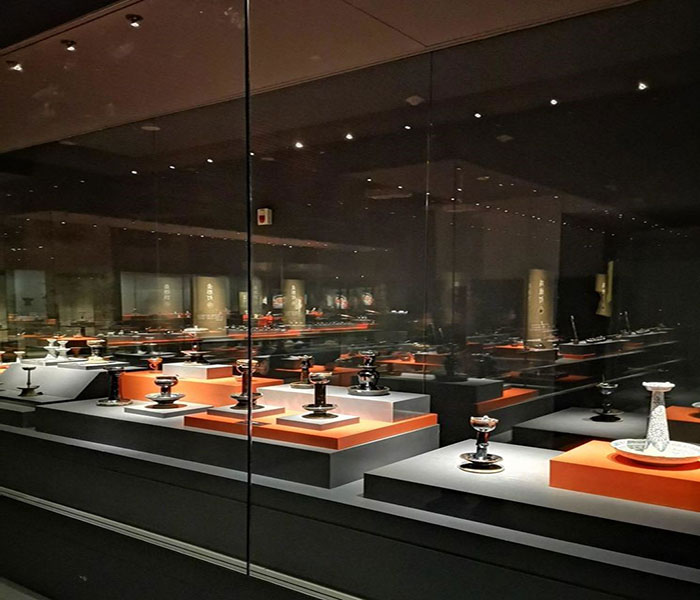Behind the glass of the museum's display cabinets, what is quietly displayed is not only the exquisite works of art of various nationalities but also a vivid testimony to the diversity of human cultures. These works of art cross the boundaries of time and space, and with their unique styles and stories, converge here to form a feast for the eyes and soul.
African art attracts attention with its vibrant totems and statues. These totems are often carved with symbols of community beliefs, full of power and mystery, reminiscent of the rhythmic footsteps of the vast grasslands and the solemnity of ancient rituals. African masks, on the other hand, demonstrate a profound knowledge of life and death, spirituality, and materialism, and they serve not only as props for religious ceremonies but also as cultural memories passed down from generation to generation.
Asian art is known for its delicate craftsmanship. Chinese ceramics, with their blue and white colors, show the subtlety and restraint of oriental aesthetics, and the landscape scrolls on blue and white porcelain give people a sense of transcendence. Japan's ukiyo-e reflects the scenes of citizens' lives in Japan's Edo period, and this folk art form depicts the customs of the society at that time, which is a precious interpretation of Japan's traditional culture.
Native American art, on the other hand, demonstrates reverence for and integration with nature. The totem poles and weavings of the Indian tribes are not only versatile but also rich in the history and cosmic concepts of the tribes. The animals and mythological figures depicted on these totem poles serve as a bridge between the present world and the spirit world and as symbols of their spiritual support.

Oceania's art, on the other hand, showcases the serenity and mystery of island cultures. The surfboards of Hawaii and the tattoo art of Polynesia convey a love of the challenges of nature and the pursuit of beauty. The patterns in these artworks are rich and varied, ranging from the sea to the sky, from plants to animals, all of which are a true portrayal of the concept of harmonious coexistence of all things in nature.
European folk art constitutes another highlight of the exhibition with its strong local flavor and warm colors. The Russian nesting dolls, which depict Eastern European folk costumes and life scenes ingeniously, are layered on top of each other, signifying the continuity of life and family harmony. The Talavera pottery of Mexico, with its brilliant colors and exaggerated patterns, demonstrates the passionate and exuberant character of the Latin American people and their love of life.
In the wave of modern globalization, these national arts are particularly precious. They are not only forms of artistic expression but also carriers of the cultural identity and traditions of each nation. Each piece of artwork is like a living individual, telling the story of a nation and conveying the beliefs of a civilization.
The glass of the museum's display cabinets allows these ethnic arts to be preserved intact, and at the same time opens a window for us to recognize different cultures. Through this window, we not only see the artworks themselves but also the diverse wisdom and infinite creativity of human beings.
The exhibition of ‘World Ethnic Art Tour’ is a silent dialogue, a spiritual journey, which allows us to appreciate the wonderful interpretation of different cultures from a common starting point, and to feel the possibility of coexistence of diversity and harmony in the global village. These artifacts are not only witnesses to history, but also a source of future innovation, inspiring us to continue exploring, exchanging, and learning, and to work together to preserve and develop the cultural heritage of mankind.
Such exhibitions not only show us the diversity of art styles but also have far-reaching educational significance, reminding us to value cultural differences and promote mutual understanding of civilizations. In the slow walk of the museum, every stop and every gaze is a discovery of the infinite beauty of the world and a deep appreciation of the commonalities of human nature. The glass in these display cabinets is both a protective barrier and a window of revelation, reputable us into the vast world of national art, to enjoy the national art that has transcended mountains and seas and endured through the ages.





